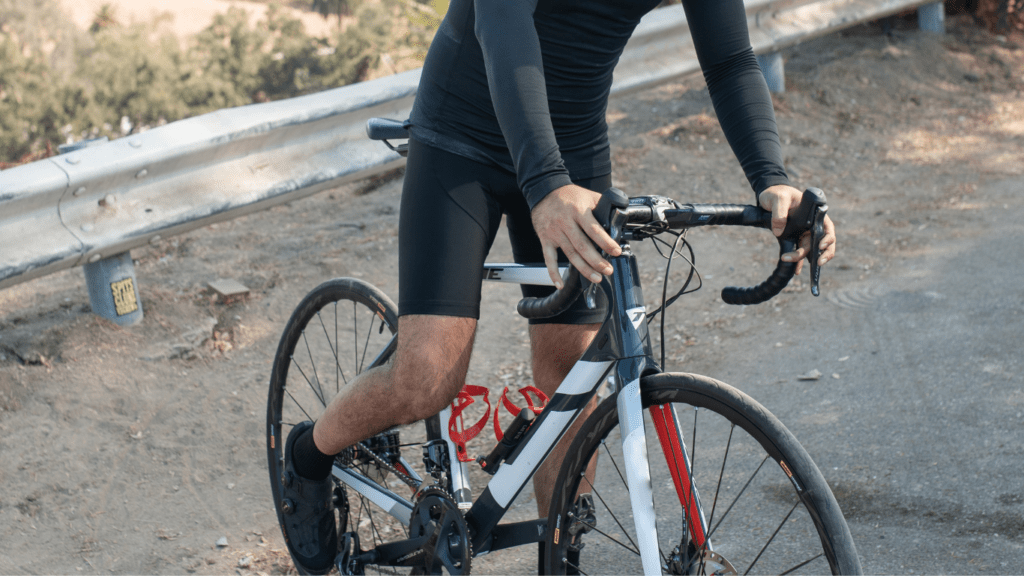The Importance of Bike Lingo
Understanding bike terminology is crucial for effective communication and safer riding.
Why Terminology Matters
Correct terminology allows riders to communicate clearly and efficiently. Knowing specific terms aids in explaining issues to mechanics, discussing routes with fellow cyclists, and understanding maintenance guides.
For example, “chainstay” and “seatstay” refer to different parts of the bike frame, and confusion between them can lead to improper repairs.
Common Confusions Among New Riders
New riders often mix up terms, leading to misunderstandings. “Cadence” refers to pedal rotations per minute, while “velocity” pertains to speed. Misusing these terms can result in incorrect advice.
Another example is “derailleur,” which describes the gear-shifting mechanism, whereas “shifter” is the handlebar-mounted control lever.
Knowing the difference ensures accurate communication during rides and maintenance.
Categories of Bike Terminology
Understanding bike terminology typically falls under two main categories: components and mechanisms, and riding techniques and styles.
Mastering these categories enhances one’s confidence in communication and riding.
Components and Mechanisms
Components and mechanisms refer to the physical parts and working systems of a bike. Examples include:
- Frame and Fork: The core structure holding everything together. The frame includes the top tube, down tube, seat tube, and chainstays.
- Drivetrain: Comprises components that propel the bike. This includes the chain, chainrings, cassette, derailleur, and shifters.
- Brakes and Levers: Key for stopping safely. Types include rim brakes, disc brakes, and hydraulic systems.
- Wheels and Tires: Essential for movement. Includes rims, spokes, hubs, and either clincher, tubeless, or tubular tires.
- Pedals and Cleats: Points of contact with the rider’s feet. Pedals can be clipless or platform types, and cleats are attached to cycling shoes.
Understanding these helps in maintenance and improves bike performance.
Riding Techniques and Styles
Riding techniques and styles describe how riders engage with their bikes and different forms of cycling. Examples include:
- Cadence: The rate at which a cyclist pedals. Maintaining an optimal cadence conserves energy during rides.
- Drafting: Riding closely behind another rider to reduce wind resistance, saving energy during group rides.
- Cornering: Technique for safely navigating turns. This involves body positioning and bike handling.
- Climbing and Descending: Techniques for uphill and downhill rides. Climbing requires steady effort and low gears; descending focuses on control and speed management.
- Types of Riding: Includes road cycling, mountain biking, cyclocross, and commuting. Each style has its own community and specific gear preferences.
Grasping these terms fosters better understanding and interaction within the cycling community.
Decoding Bike Slang
Knowing bike slang enhances communication among riders. Familiarity with these terms boosts both safety and camaraderie.
Popular Slang and Their Meanings
Riders use various slang to describe their experiences. Here are some common ones:
- Bonk: Describes complete energy depletion. Example: “I bonked hard after mile 50.”
- LBS: Acronym for Local Bike Shop. Example: “I grabbed a new chain at my LBS.”
- Paceline: A group riding in a single file to cut wind resistance. Example: “We formed a paceline to tackle the headwind.”
- SAG Wagon: Support vehicle following cyclists to provide mechanical or medical help. Example: “The SAG wagon helped after my tire blew out.”
- Spin: Refers to pedaling at a high cadence with low resistance. Example: “I like to spin on flat terrain.”
Regional Variations in Bike Slang
Different regions develop unique slang terms. Riders should be aware of these variations:
- East Coast: Uses the term “Hammerfest” to describe aggressive group rides. Example: “Join our Hammerfest on Saturdays.”
- West Coast: Often refers to mountain bike trails as “Singletrack.” Example: “The singletrack here is gnarly.”
- Midwest: Commonly uses “Rails-to-Trails” to denote converted railway paths. Example: “I rode 20 miles on the Rails-to-Trails route.”
- South: Refers to long climbs as “Grinds.” Example: “That gravel grind was intense.”
Recognizing these regional differences ensures effective communication during rides.
How Knowing Bike Lingo Enhances Your Riding Experience
Understanding bike lingo improves your riding experience by making communication seamless and enhancing safety. I’ll explain how recognizing specific terms can achieve this.
Improving Communication with Other Cyclists

Knowing bike terminology helps me effectively convey messages to other cyclists. For example, when riding in a group, I can quickly alert others by shouting “on your left” to indicate passing.
Using terms like “paceline” or “drafting” ensures everyone understands the formation and riding technique.
Specific lingo also enhances camaraderie; discussing a recent “bonk” (hitting a wall of fatigue) allows fellow riders to empathize and share advice.
Enhancing Safety and Confidence on the Road
Recognizing bike-specific terms boosts my road safety and confidence.
I know what actions to expect during a “pull” (taking the lead in a paceline) or how to react when someone mentions “gravel grind” (riding on unpaved roads).
Familiarity with terms like “SAG wagon” (support vehicle) ensures I can seek help during mechanical issues. This knowledge reassures me, especially in unfamiliar areas, making my rides safer and more enjoyable.

 Hello, I'm Henry Kirkland, and I’m proud to be part of the Cycle Smooth Ride Long team. Cycling is more than just a sport for me—it’s a way of life. I’m here to share my passion and expertise with you, helping you navigate the world of cycling with confidence and joy.
Whether you’re a beginner looking to get started or a seasoned rider aiming to refine your skills, my goal is to provide you with the insights, tips, and guidance you need to make the most of your cycling journey. At Cycle Smooth Ride Long, we’re dedicated to creating a community where cyclists of all levels can connect, learn, and grow together.
Hello, I'm Henry Kirkland, and I’m proud to be part of the Cycle Smooth Ride Long team. Cycling is more than just a sport for me—it’s a way of life. I’m here to share my passion and expertise with you, helping you navigate the world of cycling with confidence and joy.
Whether you’re a beginner looking to get started or a seasoned rider aiming to refine your skills, my goal is to provide you with the insights, tips, and guidance you need to make the most of your cycling journey. At Cycle Smooth Ride Long, we’re dedicated to creating a community where cyclists of all levels can connect, learn, and grow together.
